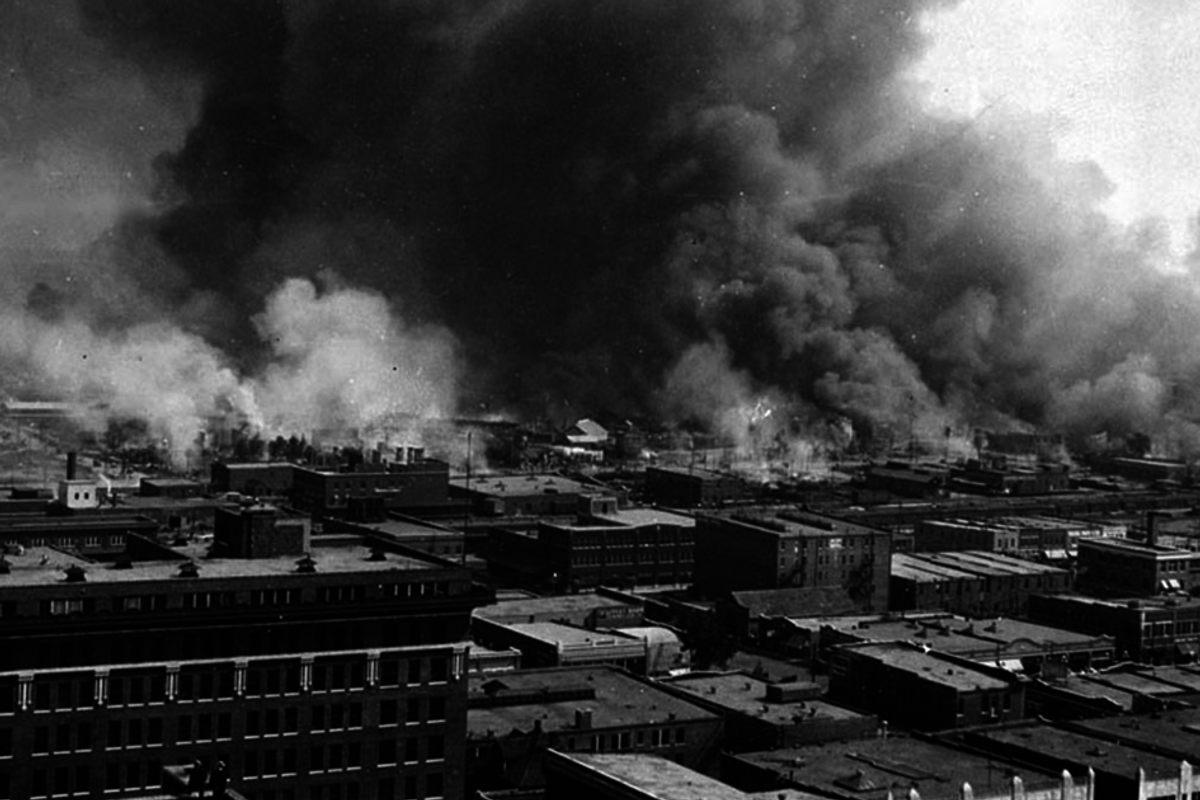Oklahoma leaders announce they'll finally start teaching about the 1921 Tulsa Race Massacre in schools

Tulsa, Oklahoma was a prosperous city in 1921. An oil boom had people flocking to the town to get their piece of the American dream. But there was a dark side to the prosperity, crime rates were high and vigilante justice, the norm.
On May 30, 1921, a black teenager named Dick Rowland entered an elevator in an office building. Soon after, a young white elevator operator named Sarah Page screamed, and Rowland fled the building.
The police were called and Rowland was arrested and jailed at the courthouse. Throughout the day, rumors filled the town about what happened in the elevator and an angry white mob gathered outside the courthouse.
Around 25 armed black men, many World War I veterans, gathered at the courthouse in an effort to protect Rowland. By 10pm that night, around 75 armed blacks clashed with some 1,500 whites and chaos ensued.
Over the next several hours, white Tulsans, may of which were deputized and armed by local law enforcement, committed acts violence against blacks, including the shooting of an unarmed man in a movie theater.
Thousands of whites eventually poured into the Greenwood District, an affluent black neighborhood, and burned and looted homes over an area of 35 city blocks.
By June 1, the rioting subsided and the police released Rowland from jail. Red Cross reports showed that during the riots 1,256 houses were burned and 215 others were looted but not torched.

In 2001, the Race Riot Commission concluded that 100 to 300 people were killed during the tragedy and over 8,000 were made homeless.
The Tulsa Race Massacre is either the first or second most dangerous race riot in U.S. history, but many people — even those in Tulsa — never even learned about it. It wasn't until racial attitudes began to change in the '70s that historians began to study the event.
After the killings, attempts were made to cover up what happened. News stories were removed from archives, and some official accounts were destroyed. This conspiracy of silence kept the event off of people's tongues for nearly 50 years.
"Blacks lost everything. They were afraid it could happen again, and there was no way to tell the story," high school history teacher Seymour Williams told the Los Angeles Times.
"The two Negro newspapers were bombed. ... [People] were too busy just trying to make it," Williams continued. "The killers were still running loose, and they're wearing blue suits as well as Klan sheets."
But now, all of that is going to change in the state of Oklahoma.
Last week, state leaders announced that the 1921 Tulsa Race Massacre will now be part of the curriculum in all Oklahoma schools. Starting this fall, all elementary children will be taught about the event.
"What we want to ensure is that ... we are teaching in a grade-appropriate level those facts that have not been taught in a way they should have been taught in Oklahoma," Joy Hofmeister, Oklahoma's State Superintendent, said. "This is ... our history and we should know it."
"What I'm deeply committed to in Tulsa Public Schools is making sure that never happens again," Deborah A. Gist, the superintendent of Tulsa Public Schools, said.
The city's mayor believes that the best way to prevent history from repeating is by making sure that people learn from the past.
"How we can use this horrible tragedy to instruct and inform and make sure that nothing like this ever happens again," Tulsa Mayor G.T. Bynum said.
"This isn't something that you just read about in history books and think that's something that happened 100 years ago, it can never happen again," he continued. "That's exactly what people in 1921 in Tulsa probably thought, too."
- Oprah's blue eyes brown eyes experiment sheds light on racism ... ›
- In a deeply personal interview, Kobe Bryant once shared how ... ›
- Using the 'dictionary definition of racism' defense is a sure sign you ... ›
- A 107-yr-old witness to the Tulsa Race Massacre just gave a powerful testimony to Congress - Upworthy ›







 Christopher Plummer and Julie Andrews on location in Salzburg, 1964
Christopher Plummer and Julie Andrews on location in Salzburg, 1964 Bed Bugs Belarus GIF
Bed Bugs Belarus GIF Bed bugs are about the size of an apple seed.
Bed bugs are about the size of an apple seed. bug GIF
bug GIF Checking mattresses for signs of bed bugs at a hotel can help you avoid bringing them home.
Checking mattresses for signs of bed bugs at a hotel can help you avoid bringing them home. Alone time.
Alone time. Harsh words create distance. Image via Canva
Harsh words create distance. Image via Canva Feeling lonely in a shared home. Image via Canva.
Feeling lonely in a shared home. Image via Canva. Bored Season 5 GIF by The Office
Bored Season 5 GIF by The Office This was basically parenting in the 1960s
This was basically parenting in the 1960s TikTok · Alanna | First Time Mom 🇨🇦
TikTok · Alanna | First Time Mom 🇨🇦 This baby has nothing in his pack 'n play at all. Well done parents!
Photo by
This baby has nothing in his pack 'n play at all. Well done parents!
Photo by